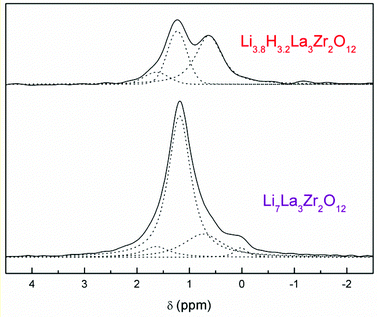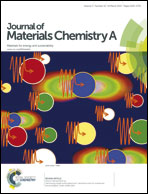NMR study of Li distribution in Li7−xHxLa3Zr2O12 garnets†
Abstract
Despite the large number of NMR studies performed on lithium conductors with a garnet-type structure, the distribution of the lithium ions in Li7La3Zr2O12 (LLZO), and their contribution to ionic conductivity are still a matter of controversy. In this work we present a magic-angle spinning (MAS) NMR study of enriched 6Li7−xHxLa3Zr2O12 (0 ≤ x ≤ 5) garnets with the aim of identifying the bands arising from the different lithium sites occupied in the garnet lattice. Taking advantage of the known sensitivity of this material to moisture and facile proton-for-lithium exchange, we have been able to alter the relative population of tetrahedral and octahedral sites (the exchange is favoured in the latter) by submitting the samples to different post-treatments to obtain samples with varying lithium content. This has allowed the identification of three different bands that we ascribe to Li in different environments within the garnet structure. In addition, variable temperature measurements have indicated the presence of dynamic exchange processes between the octahedral and tetrahedral Li sites. Protons inserted in the garnet structure were analyzed using 1H-MAS-NMR and Raman spectroscopies. 6Li-1H-CP-MAS experiments have allowed the investigation of the relative distribution of protons and lithium ions in partially exchanged samples.


 Please wait while we load your content...
Please wait while we load your content...